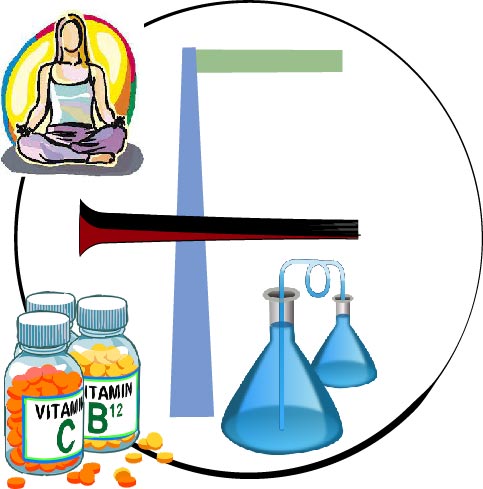
Potentiometric Titration
karl fischer titration || HPLC || GC || GMP || Method validation || QMS
What is Potentiometric Titration?
Potentiometric titration is a technique similar to direct titration, but in this, no indicator reagent is used; instead, an electrode is used as an indicator. In potentiometric titrations, a cell is used with a reference electrode, salt bridge, analyte and an indicator electrode. Generally, the electrolyte solution is used as an analyte. Hydrogen electrodes, silver chloride electrodes and calomel electrodes are generally used as reference electrodes. Indicator electrode is generally glass electrode and metal ion electrode.
Potentiometric Titration principle of Potentiometry Principle
When the pair of electrodes are placed in the sample solution or analyte, it shows the potential difference between two electrodes by the addition of the titrant or by the change in the concentration of ions.
The two electrodes are named reference electrodes and indicator electrodes. The reference electrode is the electrode that maintains its potential and remains stable when dipped into a sample solution. An indicator electrode is an electrode that responds to variation in the potential of analyte solution. A salt bridge is used to prevent interference of the analyte with the reference electrode.
The electromotive force or overall potential difference can be calculated by using the following formula –
Ecell = Eind – Eref + Ej
Where
Ecell = electromotive force of the complete cell
Eind = electromotive force of the indicator electrode
Eref = electromotive force of the reference electrode
Ej = electromotive force at the junction across the salt bridge
(Image will be uploaded soon)
The electric potential of the cell is dependent on the concentration of ions in contact with the indicator electrode, as shown in the above graph. As a result, the Ecell is measured after each titrant addition.
Potentiometric Titration Procedure
Potentiometric titration involves the measurement of the potential of an indicator electrode with respect to a reference electrode as a function of titrant volume. In this titration, we measure and record the cell potential (in millivolts or pH) after adding titrant each time. As we approach the endpoint, we start adding titrants in very small quantities. The most straightforward and most used method of endpoint detection in potentiometric titration is plotting a graph between cell potential and volume of titrant. The midpoint of the steeply rising portion of the graph or curve is estimated visually and taken as an endpoint. As it is shown below in a sample graph –
Types of Potentiometric Titration
Following four types of titrations can be performed by potentiometric titration –
Acid-base titration
Titration of HCl with NaOH can be done by potentiometric titration. This concentration of a given acid/base is determined by using a standard solution.
Redox Titration
Potentiometric titration was first used for redox titration by Crotogino. He titrated halide ions with KMnO4 using a platinum electrode and calomel electrode.
Complexometric titration
In this type of potentiometric titration concentration of metal ions are determined in the analyte. In this membrane, electrodes are used.
Precipitation Titration
In this type of titration, the precipitate is formed, as the name suggests. When the addition of the titrant no longer forms a precipitate, that point is noted as the endpoint.
Applications of potentiometric titrations
-
It is used in clinical chemistry for the analysis of metals.
-
It is used for the analysis of cyanide, ammonia etc., in water or wastewater.
-
It is used in agriculture for the detection of different elements in soils, fertilizers etc.
-
It is used in detergent manufacturing, food processing etc.
Let us look at the application of potentiometric titrations across various industries in detail.
Clinical chemistry
They are useful sensors because analytes in complexmatrices are selective for ion-selective electrodes in clinical chemistry. Analytes including sodium, potassium, calcium, hydrogen, and chlorine, as well as dissolved gases like CO₂, are commonly used.
Environmental chemistry
Environmental chemistry is used to quantify CN–, NO3, F3, and NH3 in water and wastewater.
Potentiometric titrations
To calculate the equivalence point, a potentiometric acid-base titration is used. Chemical reactions such as precipitation, acids, bases, redox processes, complexations, and also including the other chemical reactions may be titrated in both aqueous and non-aqueous solvents.
Agriculture
NO3, NH4, I, Ca, K, and CN are all elements found in soils, plant materials, feed, and fertilisers.
Detergent production
Studying the effects of calcium, barium, and fluorine in detergent manufacturing.
Potentiometry titration also available in app
- in this app we discuss of potentiometry titration
- give life example like husband and wife relationship they how to live with each other.
- what is relation of this cuple his neighborhood
Potentiometric Titration
Download app store

Pharma Interview
Download app store
Potentiometric titration Blog
No Results Found
The page you requested could not be found. Try refining your search, or use the navigation above to locate the post.
Pharma Blog
Karl fischer titration
by maheshbhuva | May 7, 2025 | Analytical Chemistry, karl Fischer titration, Quality control (QC), Titration
"Kal Fischer" most likely refers to Karl Fischer Titration.Karl Fischer titration is a well-established chemical method used to determine the water content of a wide variety of samples. It's a common technique in many industries, including: * Food and beverage: To...
How to Analytical Method validation Planing
by maheshbhuva | May 5, 2025 | Analytical Chemistry, Analytical method development hplc,, Method validation, Pharmaceutical interview,, Quality control (QC), stability
Ah, method validation planning in pharma – a cornerstone of ensuring the quality and reliability of pharmaceutical products! It's all about demonstrating that your analytical methods are fit for their intended purpose.To get started with effective method validation...
How to measure OOT IN pharmaceuticals industry
by maheshbhuva | May 3, 2025 | Analytical Chemistry, Quality control (QC), stability
Out-of-Trend (OOT) in Pharmaceutical StabilityIn the pharmaceutical industry, Out-of-Trend (OOT) results refer to analytical data obtained during stability studies that, while still within the established specification limits, deviate significantly from the expected...
Stability sample Labeling procedure as per guidelines in pharmaceuticals industry
by maheshbhuva | May 1, 2025 | Analytical Chemistry, Quality control (QC), stability
To ensure proper management and traceability of samples undergoing stability studies in a pharmaceutical setting in Surat, Gujarat, India, the labels on these samples must contain specific information. These labels are critical for identifying the samples, their...
Stability sample charges as per guidelines
by maheshbhuva | Apr 30, 2025 | Analytical Chemistry, Quality control (QC), stability, wet lab
1. Charging Samples to a Stability Study (Initiation):In the pharmaceutical industry, "charging" samples to a stability study refers to the process of formally placing representative samples of a drug substance or drug product into controlled storage conditions (e.g.,...
Heavy metal -B
by maheshbhuva | Apr 27, 2025 | Analytical Chemistry, Heavy metal, Quality control (QC)
Method B in heavy metal testing is used for substances that do not yield clear, colorless solutions when tested under Method A. It involves reacting the sample with hydrogen sulfide or sodium sulfide to form colored metal sulfides, which are then compared to a...
Heavy metal Method -A
by maheshbhuva | Apr 26, 2025 | Analytical Chemistry, Analytical method development hplc,, Quality control (QC)
heavy metals in a substance. It involves reacting the substance with hydrogen sulfide (or sodium sulfide) to produce colored heavy metal sulfides, which are then compared to a standard lead solution. The test ensures that the sample does not exceed a specified heavy...
Heavy metal analysis
by maheshbhuva | Apr 25, 2025 | Analytical Chemistry, Analytical method development hplc,, Heavy metal, Quality control (QC)
measures the fluorescence emitted by atoms in a sample excited by a light source. X-ray Absorption Spectroscopy (XAS): XAS provides information about the chemical form of heavy metals in a sample. Sample Preparation:Before analysis, samples (e.g., soil, water,...
HPLC PUMP TROUBLESHOOTING
by maheshbhuva | Apr 24, 2025 | Analytical Chemistry, Hplc
HPLC (High-Performance Liquid Chromatography) pump issues can significantly impact the performance and reliability of your chromatographic analysis. Here are some common problems and potential solutions: Common Issues: Flow rate inconsistencies: Variations in flow...
HPLC Blog
HPLC METHOD DEVELOPMENT
Analytical Chemistry, Analytical method development hplc,, Hplc, Quality control (QC)
HPLC (High-Performance Liquid Chromatography) method development is a critical process in analytical chemistry, involving the creation of a precise and reliable method for separating, identifying, and quantifying the components of a mixture.Here's an overview of the...
Which is best solvent between Methanol vs Acetonitrile in HPLC
Theoretical Plates chromatography-analytical chemistry
Hplc, Hplc column, Quality control (QC)
Theoretical Plates chromatography In chromatography, theoretical plates are a fundamental concept used to assess the separation efficiency of a chromatographic column. They play a crucial role in determining the quality and effectiveness of the chromatographic...
Type of HPLC column
Analytical Chemistry, Analytical method development hplc,, Hplc, Hplc column, Quality control (QC)
In HPLC chromatography, the column is where the separation of the sample takes place. This is where the sample is passed through the stationary phase with the mobile phase, resulting in the separation of the sample components. As the sample being analyzed is likely to...
621 no chapter chromatography was update at on date 1-dec-2022
621 USP CHAPTER, Analytical Chemistry, Hplc
What is update change Definitions Here Definitions and chromatograms both unified and give title Definitions Give method dwell volume determine being added Definitions add definitions size-exclusion chromatography (Distribution constant, Retention time of an...
Latest pharmacopoeia
Analytical Chemistry, Hplc, Pharmaceutical interview,
USP 44-NF 39, which became official on November 1, 2021.
